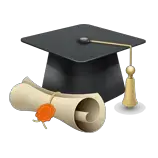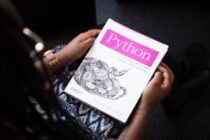The next generation of women in STEM is coming to life through the power of scholarships, creating a beacon of hope and opportunity for many young women around the globe. As the demand for skilled professionals in science, technology, engineering, and mathematics continues to rise, these scholarships are a crucial component in empowering women to break traditional barriers and contribute significantly to their chosen fields. Scholarships not only provide financial support but also act as a catalyst for gender equality in STEM careers, where women have historically been underrepresented.
One of the noteworthy scholarships that support women aiming to excel in STEM is the $850 International Relations Excellence Reward in Switzerland. While this scholarship primarily focuses on international relations, it symbolizes a broader trend of scholarships encouraging women to pursue further education and leadership roles, including those in STEM. By assisting financially, these scholarships help alleviate one of the major barriers to higher education and offer opportunities to those who might otherwise be unable to afford it.
Moreover, in the UK, the £10,000 David Weir Athletic Bursary for Sports Studies in 2024 exemplifies how scholarships can extend into different domains, potentially benefiting the crossover into STEM fields. Even though it’s tailored for sports studies, it highlights the diversity of available scholarship programs that encourage women to explore various arenas of academic and athletic pursuits. Similar scholarships, however, specifically dedicated to women in STEM, are critical for nurturing the next wave of female scientists, engineers, and technologists.
These scholarships serve a dual purpose. They not only reduce financial burden but also deliver an affirmative message to women that their presence and contributions in STEM are valued. Mentorship and networking opportunities, often included with scholarships, pave the way for building important connections that can assist in career advancement. These elements are crucial as they help build self-confidence among women, allowing them to see themselves as capable leaders and innovators.
Efforts to attract women into STEM start before higher education. Schools and communities are increasingly focused on encouraging girls’ interest in these subjects from an early age. Programs, workshops, and initiatives aimed at exposing young girls to STEM disciplines are pivotal. Providing hands-on experiences and role models within these fields, from elementary through high school, helps in inspiring passions that they can explore further with scholarship support at the collegiate level.
Technology companies and other industry leaders recognize the value of diverse perspectives and are investing in scholarship programs. Many organizations have established their own scholarships and partnerships with educational institutions to ensure a steady pipeline of talented women entering the tech and engineering fields. These initiatives not only support the recipients financially but also reflect a commitment to fostering innovation through equality and diversity.
Colleges and universities are also at the forefront of this movement, offering a range of scholarships specifically for women in STEM. These scholarships are designed to target different needs and backgrounds, ensuring inclusivity and access to education for women from various socioeconomic statuses and ethnicities. Some institutions have even set ambitious goals to increase the percentage of women in STEM, reflecting a growing institutional commitment to addressing gender disparity in these fields.
The impact of scholarships on women in STEM extends beyond individual success stories. It contributes to the greater social good by encouraging a more diverse workforce. Diverse teams are known to be more innovative and effective, as they bring a variety of perspectives and approaches to problem-solving. Encouraging more women to enter STEM fields ultimately benefits businesses, industries, and society as a whole.
Moreover, scholarships can also play a vital role in closing the gender pay gap in STEM fields. By supporting women through education and into their careers, these financial aids can facilitate a leveling of the playing field, leading to fairer pay and progression opportunities. Women, once established in their careers, often become role models for the next generation, thus perpetuating a cycle of empowerment and advocacy.
In conclusion, the next generation of women in STEM through scholarships is not just an educational advancement but a societal one. As more women are equipped to enter these fields through financial support, the traditional narratives surrounding gender roles in STEM are shifting. Women’s presence is being normalized, their contributions are being celebrated, and equity is becoming a central theme in STEM conversations.
As society continues to push for greater gender parity across all fields, scholarships like the $850 International Relations Excellence Reward in Switzerland and various programs designed for women signify important change. By investing in women, these scholarships help cultivate a more inclusive, innovative, and equal future. The next generation of women in STEM is on the horizon, bolstered and inspired by the many scholarships available today—ensuring that dreams once distant are now within reach for all those eager to pursue them.






